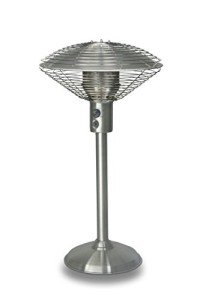The Top Reasons People Succeed With The Buy Gas Radiant Heaters Industry
Buying Gas Radiant Heaters: A Comprehensive Guide
Gas radiant heaters have acquired popularity recently for their effectiveness and ability to provide instantaneous warmth. As more property owners and companies look for ways to keep their areas comfortable, understanding the features, benefits, and considerations when buying these heating systems can be very helpful. This article looks into the complexities of gas radiant heaters, assisting potential purchasers in making notified choices.
What are Gas Radiant Heaters?
Gas radiant heaters are gadgets that make use of propane or natural gas to emit heat straight into a room. Instead of heating the air, they warm things and people in their vicinity, providing comfort faster and efficiently. These heaters are popular for both indoor and outdoor settings due to their flexibility and effectiveness.
Secret Features of Gas Radiant Heaters
- Direct Heating: Unlike standard heaters that warm the air, gas radiant heaters offer direct heat, making them an efficient option for quickly heating up areas.
- Mobility: Many models are available as portable systems, enabling them to be easily moved from one area to another.
- Fuel Variety: Gas radiant heaters can be powered by gas or propane, providing users versatility based upon schedule and choice.
- Adjustable Settings: Most gas radiant heaters featured adjustable heat settings, enabling users to personalize the level of heat based on their requirements.
Benefits of Gas Radiant Heaters
- Energy Efficiency: These heaters convert gas into heat efficiently, resulting in lower energy bills compared to electrical heaters.
- Quick Heating: Radiant heat is felt practically right away, making these heaters ideal for unexpected temperature drops.
- Low Maintenance: Gas radiant heaters normally require less upkeep than electrical models, making them a problem-free alternative.
- Eco-friendly: When powered by clean natural gas, these heaters can be a more ecologically sustainable option compared to other heating approaches.
Kinds Of Gas Radiant Heaters
When it pertains to picking a gas radiant heater, it's necessary to comprehend the different types offered. Below are the most typical options:
- Indoor Gas Radiant Heaters: Designed for indoor areas, these heaters are generally vented or unvented and often included integrated security features.
- Outdoor Gas Radiant Heaters: Commonly used in patio areas or outdoor dining areas, these heaters are developed to stand up to the components.
- Wall-Mounted Gas Radiant Heaters: A space-saving option, these units are ideal for smaller spaces and can be equipped with various heat outputs depending upon the location's requirements.
- Freestanding Gas Radiant Heaters: These portable designs can be used in different areas, perfect for those who require flexibility.
Purchasing Guide: How to Choose the Right Gas Radiant Heater
When acquiring a gas radiant heater, several aspects must be thought about to guarantee you pick the right model for your space:
1. Heating Capacity
- Measured in BTUs (British Thermal Units), the heater's capacity figures out just how much area it can efficiently warm. Purchasers need to examine their specific requirements based on room size.
Room Size (sq ft)
Recommended BTUs (for Gas Radiant Heaters)
100 – 200
5,000 – 10,000 BTUs
200 – 400
10,000 – 20,000 BTUs
400 – 600
20,000 – 30,000 BTUs
600 – 800
30,000+ BTUs
2. Type of Gas
- Think about whether you will be using propane or gas, as various heaters deal with various fuel types.
3. Safety Features
- Look for models geared up with safety functions such as automatic shut-off valves, tip-over protection, and oxygen deficiency sensing units.
4. Setup Requirements
- Some heaters might require expert installation, specifically vented designs. Be sure to think about the expenses and requirements connected with installation.
5. Portability
- If flexibility is essential, consider portable models that can be easily moved from one area to another.
Installation and Maintenance
Gas radiant heaters are typically straightforward to install, specifically portable designs. Nevertheless, vented options may demand professional setup to guarantee they satisfy local safety codes.
Upkeep normally includes:
- Regular cleansing to prevent dust accumulation.
- Checking gas connections and fittings for leaks.
- Making sure security features are functional.
Tip: Regular checks around the system can help extend its life-span and maintain safety.
Frequently Asked Questions (FAQs)
Q1: Are gas radiant heaters safe for indoor use?A1: Yes
, as long as they are appropriately vented and equipped with required security features, they can be securely used inside your home.
**Q2: Can gas radiant heaters be used in enclosed spaces?A2: Unvented gas heaters can position risks in enclosed spaces due to potential suffocation or carbon monoxide gas accumulation. Always ensure sufficient ventilation. Fireplaces And Stoves : How do I know what size heater I need?A3: The proper size depends upon the area you intend to heat. Describe the BTU chart
above to determine your requirements. Q4: What is the difference in between propane and natural gas heaters?A4: The main difference lies in their energy source
**; propane is delivered through tanks, while gas is normally piped into homes. Q5: How can I optimize efficiency?A5: Ensure the heater is properly sized for your space, keep it regularly, and think about utilizing it in mix
**with other heating techniques for maximum comfort. Gas radiant heaters can be a fantastic addition to any home or organization, providing energy-efficient and fast heating solutions. By comprehending the various types, features, and factors to consider
when acquiring, buyers can make informed choices that fulfill their heating requires. With the ideal choice, these heaters provide convenience, reliability, and an inviting environment during cooler seasons.  ******
******